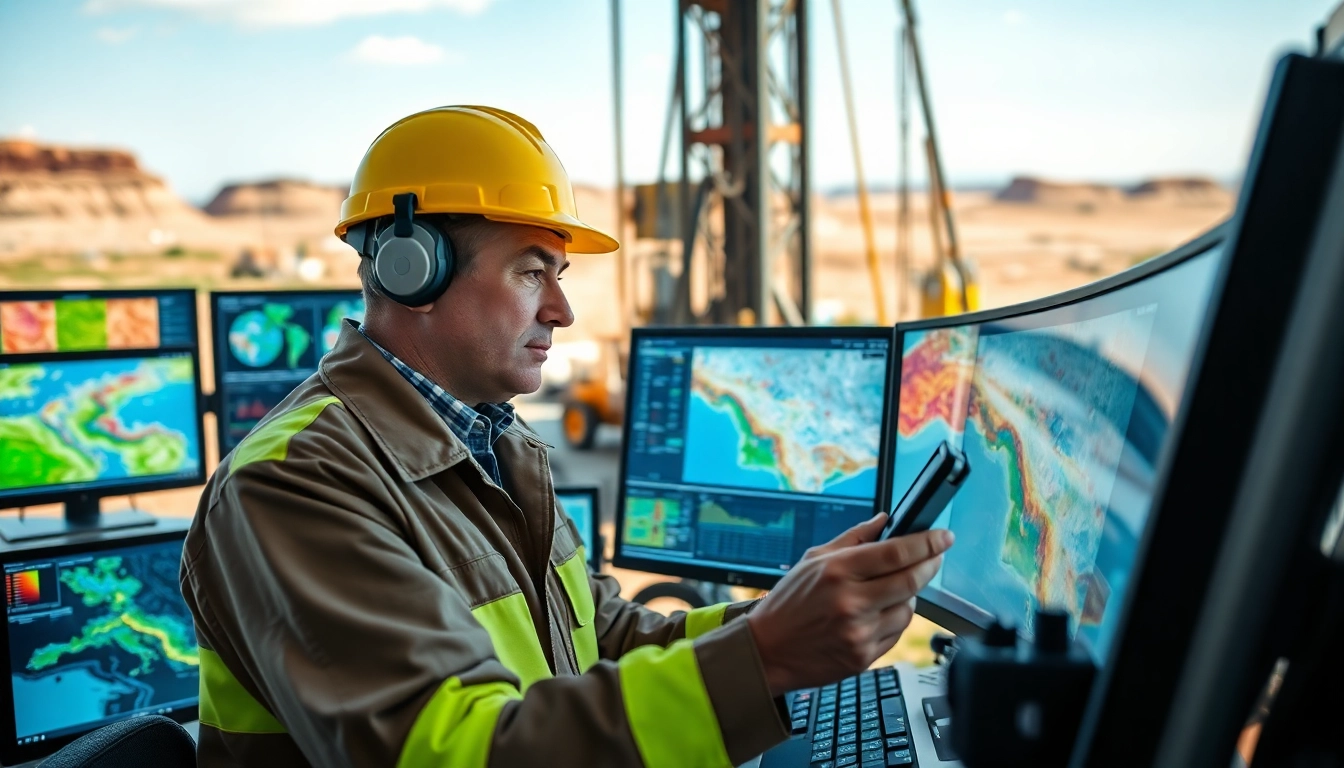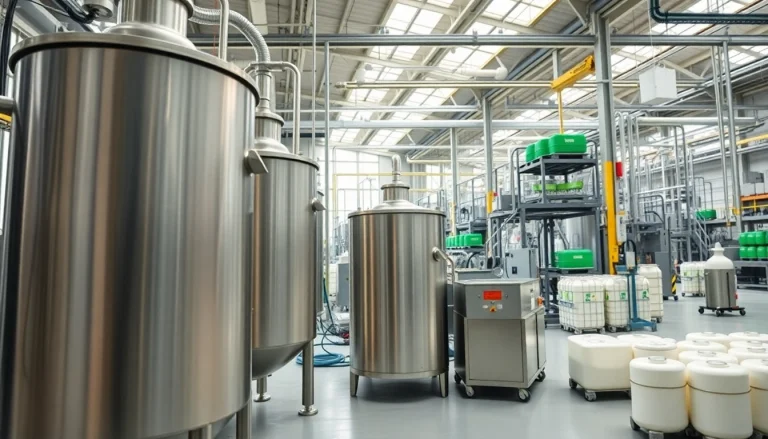Understanding Geosteering: A Comprehensive Overview
Geosteering represents a cutting-edge approach within the oil and gas industry aimed at maximizing drilling efficiency and accuracy. This technique involves real-time monitoring and adjusting of the wellbore’s trajectory based on geological data. As the thirst for energy continues to grow and the demand for cost-effective and efficient drilling processes intensifies, the relevance of geosteering becomes increasingly apparent. By leveraging technologies that enable immediate decision-making, companies can reduce costs and improve overall performance. For more in-depth insights, visit www.geosteeringvision.com.
The Basics of Geosteering
Geosteering refers to the practice of guiding the drilling of a wellbore in real-time by utilizing geological and geophysical data. Operators aim not only to maintain the well within targeted formations but also to navigate around obstacles, optimize reservoir contact, and enhance the overall recovery of hydrocarbons. This is not just about following a predetermined path but involves actively interpreting data and making informed adjustments throughout the drilling process.
The core process of geosteering includes:
- Real-Time Data Acquisition: Collecting data from various sources such as mud logging systems, downhole sensors, and geophysical logs.
- Data Analysis: Utilizing advanced software and geological models to interpret real-time data and forecast possible drilling trajectories.
- Decision Making: Based on the analyzed data, operators make adjustments in the drilling parameters and trajectory to optimize well placement.
Importance in the Oil and Gas Industry
Geosteering plays a vital role in the oil and gas industry, particularly due to the high stakes involved in drilling operations. The implications of even minor errors can result in significant financial losses, not to mention the potential environmental impact. Given these challenges, geosteering has become a cornerstone of modern drilling operations for several reasons:
- Cost Efficiency: By optimizing well placements, companies can minimize waste and reduce drilling times, leading to lower operational costs.
- Enhanced Recovery Rates: Improved contact with reservoir rock increases the recovery of hydrocarbons, making geosteering a crucial component in effective resource management.
- Environmental Protection: By avoiding unnecessary drilling and reducing the number of wells needed, geosteering technology helps reduce the environmental footprint of oil and gas operations.
Key Technologies Used in Geosteering
Modern geosteering relies on a variety of technologies that facilitate data gathering and analysis. The integration of these technologies allows for a more dynamic drilling process, resulting in better decision-making opportunities. Key technologies include:
- Directional Drilling Equipment: Tools designed to guide the drill bit along a specific path based on real-time data feedback.
- Logging While Drilling (LWD): This technology involves collecting geological data during the drilling phase, providing immediate insights that can be acted upon.
- Geospatial Software: Advanced software platforms that integrate geological data into 3D models, enabling operators to visualize potential drilling paths and make informed decisions.
- Automated Data Transmission: Systems that allow for seamless sharing of data between the drilling team and geological experts, facilitating faster response times to emerging situations.
Benefits of Implementing Geosteering Solutions
Cost Efficiency and Resource Optimization
One of the principal benefits of geosteering is its ability to enhance cost efficiency. The accurate placement of wells reduces the need for unnecessary drilling within a reservoir, which can be resource-intensive and expensive. For example, studies have shown that operators who implement effective geosteering techniques can reduce drilling costs by as much as 20%.
- Reduced Non-Productive Time: By closely monitoring the drilling process and making timely adjustments, geosteering helps minimize instances of non-productive time (NPT), during which no drilling occurs.
- Enhanced Drilling Performance: Geosteering ensures that operators remain in the target formation for as long as possible, which improves overall drilling performance and reduces costs.
- Resource Management: The optimization of drilling paths leads to better resource management, ensuring that energy extraction aligns with sustainable practices.
Real-Time Data Utilization
Real-time data utilization is critical for the success of geosteering. The ability to gather, analyze, and act on geological data instantly allows drilling teams to make informed, timely decisions. This immediacy can be the difference between success and failure in drilling operations. Key aspects of real-time data utilization include:
- Adaptive Strategies: Operators can modify drilling plans on-the-fly as new information becomes available, leading to smarter and more efficient drilling.
- Enhanced Predictability: Continuous data integration provides a clearer picture of subsurface conditions, reducing uncertainty and risks associated with drilling.
- Increased Collaboration: Real-time data fosters collaboration among teams, ensuring that geologists, engineers, and drill operators work in unison towards common goals.
Improved Well Placement and Performance
Proper well placement is critical in maximizing hydrocarbon recovery. Geosteering significantly improves well placement by allowing operators to stay within the optimal reservoir zones throughout the drilling process. The benefits are profound:
- Maximized Reservoir Contact: Geosteering strategies make it possible to increase the length of the wellbore in productive zones, thereby maximizing contact with the hydrocarbons.
- Enhanced Recovery Efficiency: Achieving better placement reduces the need to drill multiple wells in close proximity, conserving resources and improving recovery rates.
- Data-Driven Adjustments: The continual analysis of data allows for modifications in real-time, which can lead to better performance and outcomes.
Challenges in Geosteering and How to Overcome Them
Addressing Data Accuracy Issues
While geosteering offers many advantages, it is not without challenges. One significant issue is data accuracy. Real-time decision-making relies heavily on accurate geological data, and any discrepancies can lead to costly mistakes. Strategies to overcome data accuracy issues include:
- Multi-Source Data Collection: Utilizing data from various sources, including satellite imagery and seismic surveys, can enhance accuracy.
- Regular Calibration: Ensuring that all equipment used for data collection is regularly calibrated to maintain the reliability of the data.
- Cross-Validation Techniques: Employing cross-validation by comparing data from different systems can help identify inaccuracies before they affect decisions.
Managing Geological Variability
Geological variability poses another challenge in geosteering. Reservoirs are often heterogeneous, making predictability difficult. To manage geological variability effectively, operators should consider the following tactics:
- Advanced Geological Modeling: Creating robust geological models that incorporate various geological scenarios can help anticipate changes in formation properties.
- Continuous Learning: Adapting organizational knowledge from past drilling operations can inform future projects, allowing teams to better prepare for unforeseen geological variations.
- Flexibility in Operations: Allowing room for flexibility in drilling strategies can enable quicker responses to unexpected geological conditions.
Training and Skill Development for Technicians
The effectiveness of geosteering significantly depends on the skill set of the technicians involved. Investing in training and development programs for personnel is crucial. Consider the following approaches:
- Comprehensive Training Programs: Implement structured training programs that include both theoretical knowledge and practical applications of geosteering technologies.
- Mentorship Opportunities: Pairing less experienced technicians with seasoned experts fosters knowledge transfer and enhances skill development.
- Access to Continued Education: Encourage staff to pursue certification programs or attend workshops that focus on the technological advancements in geosteering.
Best Practices for Effective Geosteering
Integrating Geophysical Data
To optimize the geosteering process, integrating geophysical data with geological insights is essential. This leads to better predictions and well placements. Best practices for data integration include:
- Cross-Disciplinary Collaboration: Encourage collaboration among geologists, geophysicists, and drilling engineers to create cohesive strategies that utilize all available data.
- Data Visualization Tools: Employ state-of-the-art data visualization tools to present geophysical and geological data in an actionable format.
- Real-Time Analysis: Integrating real-time data analytics ensures immediate access to geophysical insights and better reaction times during drilling operations.
Collaborative Team Approach
Geosteering relies on a coordinated effort among multiple teams involved in drilling operations. Fostering a collaborative environment is vital for success. Key actions include:
- Regular Team Meetings: Holding regular discussions promotes information sharing and alignment on project goals.
- Shared Platforms: Utilize collaborative software platforms where teams can share data, insights, and results in real-time.
- Involvement of All Stakeholders: Ensuring involvement from all relevant stakeholders, including drilling crews and geological experts, contributes to more informed decision-making.
Continuous Monitoring and Adaptation
Continuous monitoring of drilling operations enables teams to promptly address issues and optimize performance. Best practices for ensuring effective monitoring include:
- Implementing Robust Monitoring Systems: Deploy systems that allow for the continuous monitoring of parameters such as drilling speed, torque, and bit performance.
- Real-Time Adjustment Capabilities: Equip teams with the ability to make immediate adjustments based on monitoring results to improve outcomes.
- Feedback Loops: Create feedback loops where lessons learned from previous operations feed into subsequent projects, enhancing overall performance.
Future Trends in Geosteering Technology
Advancements in Digital Solutions
As technology continues to advance, digital solutions will play an increasingly significant role in geosteering operations. Emerging trends include:
- Cloud Computing: Leveraging cloud technology for data storage and processing enables teams to access vast amounts of data from anywhere, facilitating quicker decision-making.
- Mobile Technologies: Enhancements in mobile devices will allow real-time data access and communication from remote locations, making collaborative work more feasible.
- Internet of Things (IoT): IoT applications will foster innovations in data collection, leading to more comprehensive monitoring and analysis capabilities.
Role of Artificial Intelligence in Geosteering
Artificial Intelligence (AI) is poised to revolutionize the geosteering landscape by enhancing data analysis and decision-making processes. The potential applications of AI in geosteering include:
- Predictive Analytics: AI algorithms can analyze historical data to predict potential drilling outcomes, allowing for proactive operational adjustments.
- Automated Decision Making: Machine learning systems can automate routine decision-making processes, freeing up human resources for more complex issues.
- Improved Data Insights: AI-powered tools can provide deeper insights into geological formations, improving well placement accuracy and reducing risks.
Innovative Software for Enhanced Field Operations
The future of geosteering is likely to be characterized by innovative software solutions designed to enhance field operations. These innovations may comprise:
- Advanced Simulation Tools: Software that simulates various drilling scenarios can provide a testing ground for operators before actual drilling begins.
- Enhanced User Interfaces: Next-generation user interfaces that integrate data visualization will make it easier for teams to understand complex geological data.
- Interconnected Systems: Software solutions that connect with existing systems streamline operations, ensuring data flows seamlessly between devices, teams, and processes.








